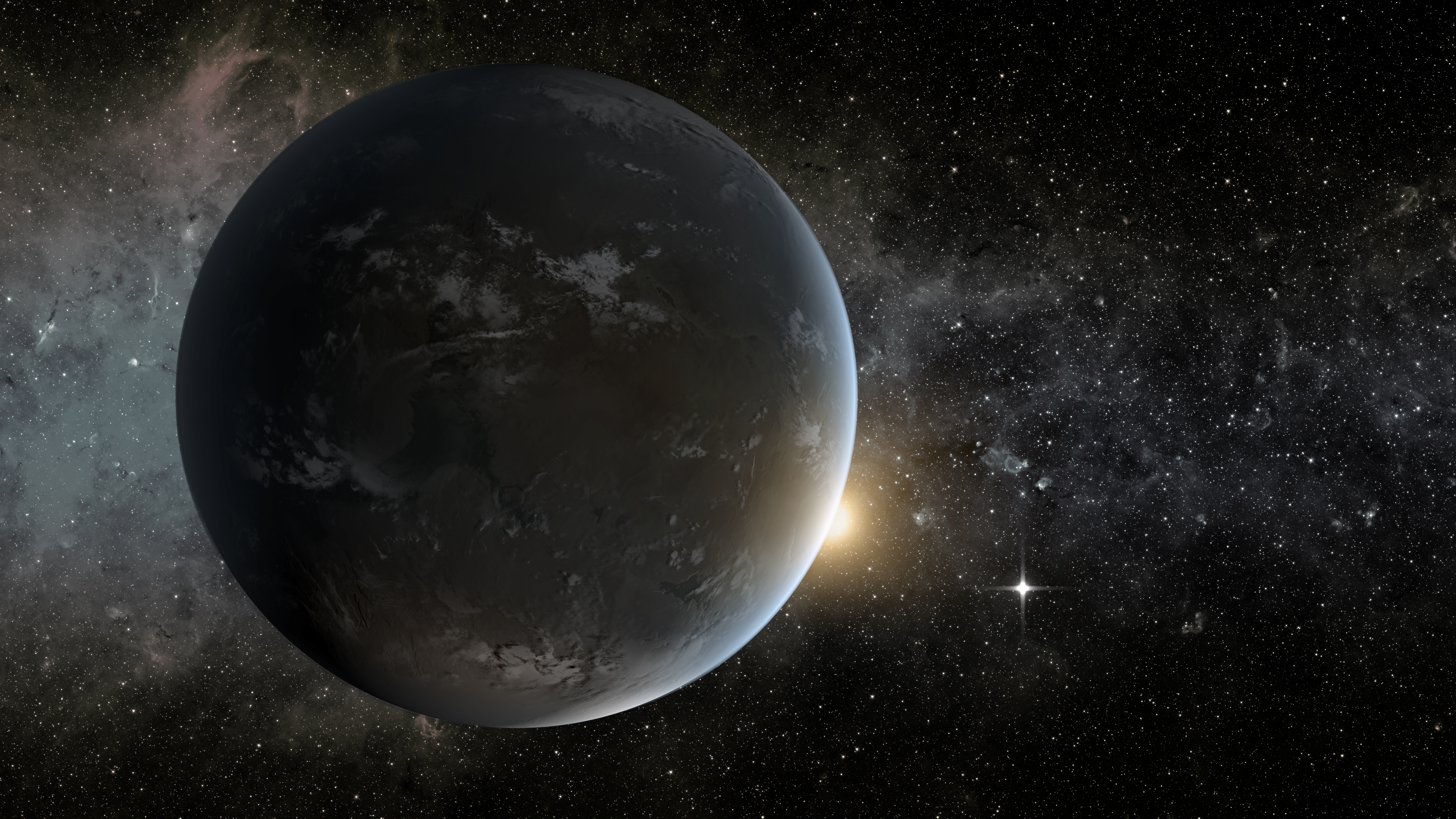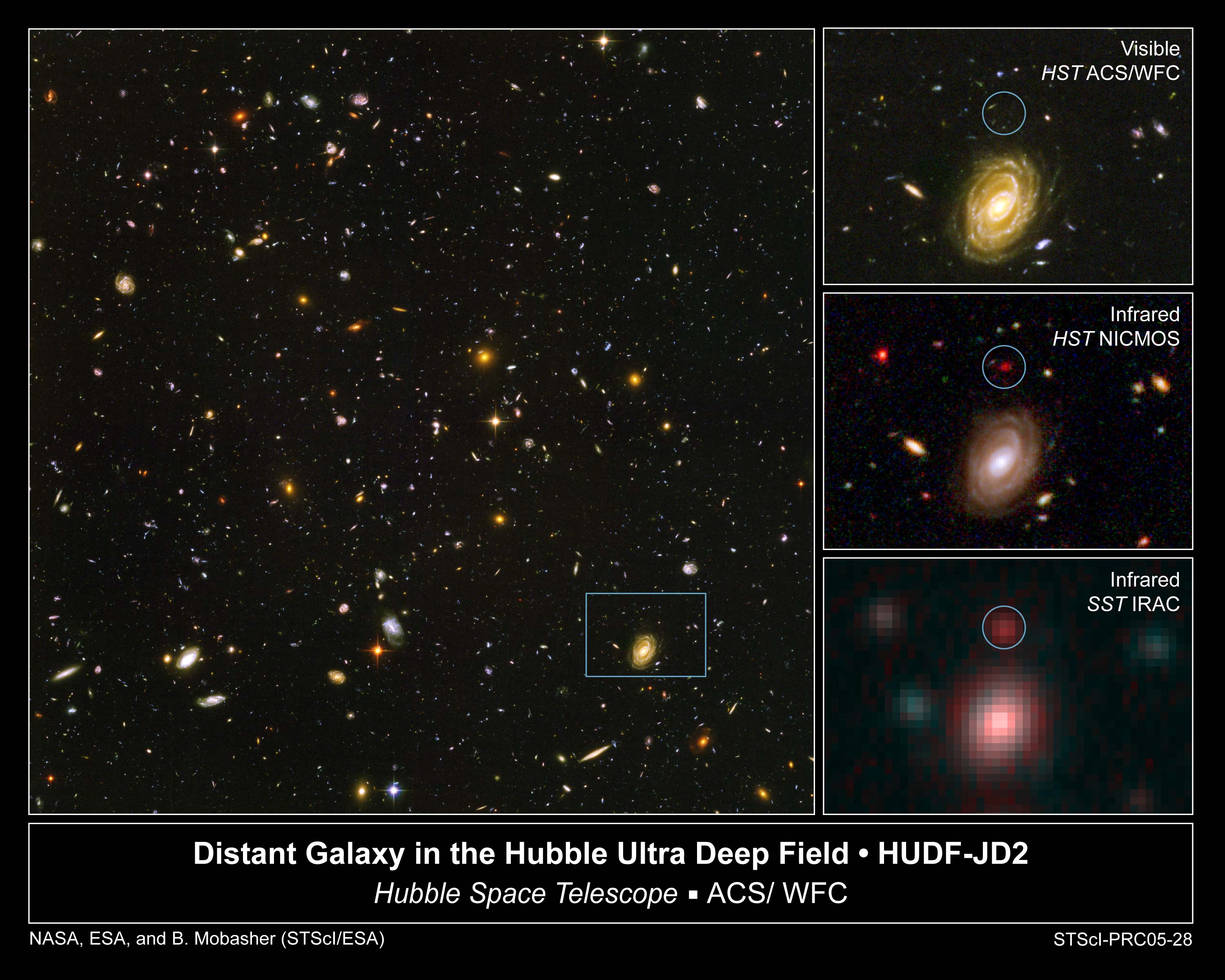|
Eric Agol
Eric Agol (born May 13, 1970 in Hollywood, California ) is an American astronomer and astrophysicist who was awarded a Guggenheim Fellowship in 2017. Career Agol is a professor and astrophysicist at the University of Washington in the Department of Astronomy. He obtained a B.A. in Physics and Mathematics from University of California, Berkeley in 1992 and a PhD in Physics from University of California, Santa Barbara in 1997 with Omer Blaes. He was awarded a Chandra Postdoctoral Fellowship in 2000, which he took to Caltech. He arrived at the University of Washington in 2003 as an Assistant Professor, and was promoted to the rank of full Professor in 2014. He advised former graduate student Jason Steffen and former postdoc Sarah Ballard. Research In 2000, together with Fulvio Melia and Heino Falcke, he proposed the possibility of observing the event horizon of the supermassive black hole in the center of the Milky Way (Sagittarius A *) with interconnected radio telescopes ... [...More Info...] [...Related Items...] OR: [Wikipedia] [Google] [Baidu] |
Hollywood, Los Angeles
Hollywood is a neighborhood in the central region of Los Angeles, California. Its name has come to be a shorthand reference for the U.S. film industry and the people associated with it. Many notable film studios, such as Columbia Pictures, Walt Disney Studios, Paramount Pictures, Warner Bros., and Universal Pictures, are located near or in Hollywood. Hollywood was incorporated as a municipality in 1903. It was consolidated with the city of Los Angeles in 1910. Soon thereafter a prominent film industry emerged, having developed first on the East Coast. Eventually it became the most recognizable in the world. History Initial development H.J. Whitley, a real estate developer, arranged to buy the E.C. Hurd ranch. They agreed on a price and shook hands on the deal. Whitley shared his plans for the new town with General Harrison Gray Otis, publisher of the ''Los Angeles Times'', and Ivar Weid, a prominent businessman in the area. Daeida Wilcox, who donated land to help ... [...More Info...] [...Related Items...] OR: [Wikipedia] [Google] [Baidu] |
Event Horizon Telescope
The Event Horizon Telescope (EHT) is a large telescope array consisting of a global network of radio telescopes. The EHT project combines data from several very-long-baseline interferometry (VLBI) stations around Earth, which form a combined array with an angular resolution sufficient to observe objects the size of a supermassive black hole's event horizon. The project's observational targets include the two black holes with the largest angular diameter as observed from Earth: the black hole at the center of the supergiant elliptical galaxy Messier 87 (M87*, pronounced "M87-Star"), and Sagittarius A* (Sgr A*, pronounced "Sagittarius A-Star") at the center of the Milky Way. The Event Horizon Telescope project is an international collaboration that was launched in 2009 after a long period of theoretical and technical developments. On the theory side, work on the photon orbit and first simulations of what a black hole would look like progressed to predictions of VLBI imaging f ... [...More Info...] [...Related Items...] OR: [Wikipedia] [Google] [Baidu] |
Circumstellar Habitable Zone
In astronomy and astrobiology, the circumstellar habitable zone (CHZ), or simply the habitable zone, is the range of orbits around a star within which a planetary surface can support liquid water given sufficient atmospheric pressure.J. F. Kasting, D. P. Whitmire, R. T. Reynolds, Icarus 101, 108 (1993). The bounds of the CHZ are based on Earth's position in the Solar System and the amount of radiant energy it receives from the Sun. Due to the importance of liquid water to Earth's biosphere, the planetary habitability, nature of the CHZ and the objects within it may be instrumental in determining the scope and distribution of planets capable of supporting Earth-like extraterrestrial life and extraterrestrial intelligence, intelligence. The habitable zone is also called the Goldilocks zone, a metaphor, allusion and antonomasia of the children's fairy tale of "Goldilocks and the Three Bears", in which a little girl chooses from sets of three items, ignoring the ones that are too ex ... [...More Info...] [...Related Items...] OR: [Wikipedia] [Google] [Baidu] |
Kepler-62f
Kepler-62f (also known by its Kepler Object of Interest designation ''KOI-701.04'') is a super-Earth exoplanet orbiting within the habitable zone of the star Kepler-62, the outermost of five such planets discovered around the star by NASA's ''Kepler'' spacecraft. It is located about 990 light-years (304 parsecs) from Earth in the constellation of Lyra. Kepler-62f orbits its star at a distance of from its host star with an orbital period of roughly 267.3 days, has a mass at least 2.8x times that of Earth, and has a radius of around 1.41 times that of Earth. It is one of the more promising candidates for potential habitability, as its parent star is a relatively quiet star, and has less mass than the Sun – thus it can live up to a span of about 30 billion years or so. Due to its mass, Kepler-62f is likely a terrestrial or ocean-covered planet. However, key components of the exoplanet still need to be assessed to determine habitability; such as its atmosphere if one exists ... [...More Info...] [...Related Items...] OR: [Wikipedia] [Google] [Baidu] |
Kepler-36b
Kepler-36b is an exoplanet orbiting the star Kepler-36. This planet has the closest conjunction to Kepler-36c every 97 days. Its density is similar to that of iron Iron () is a chemical element with symbol Fe (from la, ferrum) and atomic number 26. It is a metal that belongs to the first transition series and group 8 of the periodic table. It is, by mass, the most common element on Earth, right in .... During their closest approach, Kepler-36b and Kepler-36c are located only 0.013 AU (about 1,900,000 km) from each other, which causes extreme transit-timing variations for both planets. Transit-timing variations caused by Kepler-36c are strong enough to put narrow constraints on Kepler-36b's mass. The close proximity of the planet to its host star combined with its relatively low mass caused the planet to lose all or most of its primordial hydrogen/helium envelope. References Cygnus (constellation) 36b Exoplanets discovered in 2012 {{extrasolar-pla ... [...More Info...] [...Related Items...] OR: [Wikipedia] [Google] [Baidu] |
Kepler Space Telescope
The Kepler space telescope is a disused space telescope launched by NASA in 2009 to discover Earth-sized planets orbiting other stars. Named after astronomer Johannes Kepler, the spacecraft was launched into an Earth-trailing heliocentric orbit. The principal investigator was William J. Borucki. After nine and a half years of operation, the telescope's reaction control system fuel was depleted, and NASA announced its retirement on October 30, 2018. Designed to survey a portion of Earth's region of the Milky Way to discover Earth-size exoplanets in or near habitable zones and estimate how many of the billions of stars in the Milky Way have such planets, Kepler's sole scientific instrument is a photometer that continually monitored the brightness of approximately 150,000 main sequence stars in a fixed field of view. These data were transmitted to Earth, then analyzed to detect periodic dimming caused by exoplanets that cross in front of their host star. Only planets whose o ... [...More Info...] [...Related Items...] OR: [Wikipedia] [Google] [Baidu] |
TESS
Tess or TESS may refer to: Music * Tess (band), a Spanish pop band active from 2000 to 2005 * TESS (musician), a UK musician Film and theatre * ''Tess'' (1979 film), a 1979 film adaptation of '' Tess of the d'Urbervilles'' * ''Tess'' (2016 film), a South African production * ''Tess'' (play), a stage adaptation of ''Tess of the d'Urbervilles'' featuring Tanya Franks Science and technology * Trademark Electronic Search System, a service of the U.S. Patent and Trademark Office * Transiting Exoplanet Survey Satellite, a space telescope designed to search for extra-solar planets * Ethinylestradiol/cyproterone acetate, a birth control pill * Typhoon Tess (other) Other uses * Tess (given name) * Nikolay Tess (1921–2006), member of the Soviet Ministry for State Security, convicted in Latvia of mass deportations of Latvians in the 1940s See also * TES (other) Tes or TES may refer to: Places * Tés, a village in Hungary * Tes River, a river in Mongolia * Tes, ... [...More Info...] [...Related Items...] OR: [Wikipedia] [Google] [Baidu] |
Habitable Zone
In astronomy and astrobiology, the circumstellar habitable zone (CHZ), or simply the habitable zone, is the range of orbits around a star within which a planetary surface can support liquid water given sufficient atmospheric pressure.J. F. Kasting, D. P. Whitmire, R. T. Reynolds, Icarus 101, 108 (1993). The bounds of the CHZ are based on Earth's position in the Solar System and the amount of radiant energy it receives from the Sun. Due to the importance of liquid water to Earth's biosphere, the nature of the CHZ and the objects within it may be instrumental in determining the scope and distribution of planets capable of supporting Earth-like extraterrestrial life and intelligence. The habitable zone is also called the Goldilocks zone, a metaphor, allusion and antonomasia of the children's fairy tale of "Goldilocks and the Three Bears", in which a little girl chooses from sets of three items, ignoring the ones that are too extreme (large or small, hot or cold, etc.), and se ... [...More Info...] [...Related Items...] OR: [Wikipedia] [Google] [Baidu] |
White Dwarf
A white dwarf is a stellar core remnant composed mostly of electron-degenerate matter. A white dwarf is very dense: its mass is comparable to the Sun's, while its volume is comparable to the Earth's. A white dwarf's faint luminosity comes from the emission of residual thermal energy; no fusion takes place in a white dwarf. The nearest known white dwarf is at 8.6 light years, the smaller component of the Sirius binary star. There are currently thought to be eight white dwarfs among the hundred star systems nearest the Sun. The unusual faintness of white dwarfs was first recognized in 1910. The name ''white dwarf'' was coined by Willem Luyten in 1922. White dwarfs are thought to be the final evolutionary state of stars whose mass is not high enough to become a neutron star or black hole. This includes over 97% of the other stars in the Milky Way. After the hydrogen- fusing period of a main-sequence star of low or medium mass ends, such a star will expand to a red gi ... [...More Info...] [...Related Items...] OR: [Wikipedia] [Google] [Baidu] |
HD 189733 B
HD 189733 b is an exoplanet approximately away from the Solar System in the constellation of Vulpecula. Astronomers in France discovered the planet orbiting the star HD 189733 on October 5, 2005, by observing its transit across the star's face. With a mass 16.2% higher than that of Jupiter and a radius 13.8% greater, HD 189733 b orbits its host star once every 2.2 days at an orbital speed of , making it a hot Jupiter with poor prospects for extraterrestrial life. The closest transiting hot Jupiter to Earth, HD 189733 b is a subject of extensive atmospheric examination. Accordingly, scientists have extensively studied the exoplanet's atmosphere with high- and low-resolution instruments, both from the ground and space. Researchers have found that the planet has an unusual rain of molten glass. HD 188733 b was also the first exoplanet to have its thermal map constructed (possibly to be detected through polarimetry), its overall color determined (deep blue), transit in the X-ray s ... [...More Info...] [...Related Items...] OR: [Wikipedia] [Google] [Baidu] |
Weather
Weather is the state of the atmosphere, describing for example the degree to which it is hot or cold, wet or dry, calm or stormy, clear or cloudy. On Earth, most weather phenomena occur in the lowest layer of the planet's atmosphere, the troposphere, just below the stratosphere. Weather refers to day-to-day temperature, precipitation, and other atmospheric conditions, whereas climate is the term for the averaging of atmospheric conditions over longer periods of time. When used without qualification, "weather" is generally understood to mean the weather of Earth. Weather is driven by air pressure, temperature, and moisture differences between one place and another. These differences can occur due to the Sun's angle at any particular spot, which varies with latitude. The strong temperature contrast between polar and tropical air gives rise to the largest scale atmospheric circulations: the Hadley cell, the Ferrel cell, the polar cell, and the jet stream. Weather ... [...More Info...] [...Related Items...] OR: [Wikipedia] [Google] [Baidu] |
Spitzer Space Telescope
The Spitzer Space Telescope, formerly the Space Infrared Telescope Facility (SIRTF), was an infrared space telescope launched in 2003. Operations ended on 30 January 2020. Spitzer was the third space telescope dedicated to infrared astronomy, following IRAS (1983) and ISO (1995–1998). It was the first spacecraft to use an Earth-trailing orbit, later used by the Kepler planet-finder. The planned mission period was to be 2.5 years with a pre-launch expectation that the mission could extend to five or slightly more years until the onboard liquid helium supply was exhausted. This occurred on 15 May 2009. Without liquid helium to cool the telescope to the very low temperatures needed to operate, most of the instruments were no longer usable. However, the two shortest-wavelength modules of the IRAC camera continued to operate with the same sensitivity as before the helium was exhausted, and continued to be used into early 2020 in the Spitzer Warm Mission. During the warm missio ... [...More Info...] [...Related Items...] OR: [Wikipedia] [Google] [Baidu] |







